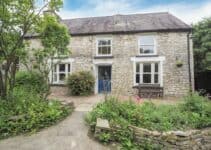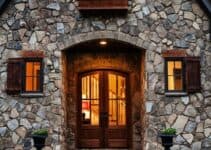Thatching is a centuries-old tradition and thatched roofs used to be the norm up and down England. Shakespeare’s Globe, the iconic London theatre where the first performances of his plays were held in the 17th century, was fashioned out of thatch.
A thatched cottage is a cottage that has a roof ‘thatched’ – covered – with dry vegetation such as straw, water reed, rushes, heather, sedge, or even palm branches.
The material used to thatch was predominantly straw. As years went by and the Industrial Revolution brought greater mining methods, while meanwhile, a growing canal and railway network opened up Great Britain, slate and other roofing materials became cheaper and more readily available and began to be used instead.
Soon, thatched roofs became replaced by slate, and thatch became associated with poverty. Thatched roofs were gradually phased out of use, particularly in urban areas.
However, thatched cottages remained, possibly out of the owner’s then-poverty over stylistic choice, and have now become the iconic dream cottage for 21st-century homeowners.
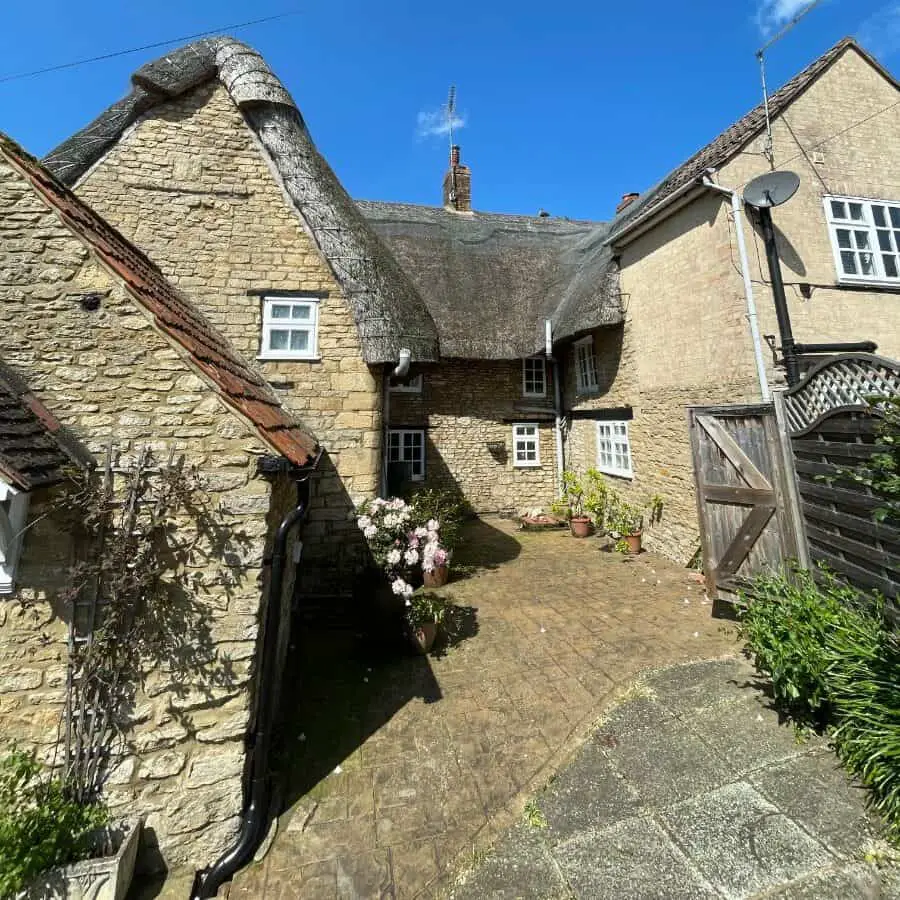
What’s The Meaning of Thatched Cottage?
The word ‘thatch’ comes from the word ‘to cover’. While most people will envision a centuries-old whitewashed English cottage when thinking of a “thatched cottage”, these thatched buildings are in existence in many parts of the world, including in Africa, because of the readiness and cheapness of the locally-sourced materials.
Thatched House Meaning
Thatched houses and thatched cottages have the same definition. Simply put, houses with a thatched roof.
In the UK, most thatched houses are very old, but in recent years, some builders have chosen thatching as a roofing material of choice because they prefer a rustic appearance or they wish to be more environmentally friendly as thatch is a sustainable resource and is very insulating.
What is a Thatched Roof?
Traditionally, a fresh coating of thatching material (straw, water reed etc) is laid on top of an existing layer, which is the accumulation of thick layers that have been built upon historic buildings over many years.
It is incredible to think that more than 250 roofs in the United Kingdom have thatch that has been in place for more than 500 years as the primary underlayer.
Because the materials are stacked, moisture is prevented from accumulating on the roof’s inner surface.
Full of character, the oldest form of roof covering insulates homes brilliantly. Warm in the winter and cool in the summer, thatch prevents leaks because rainwater generally slides gently off it, keeping it flexible and moist, making it difficult to ignite under normal conditions.
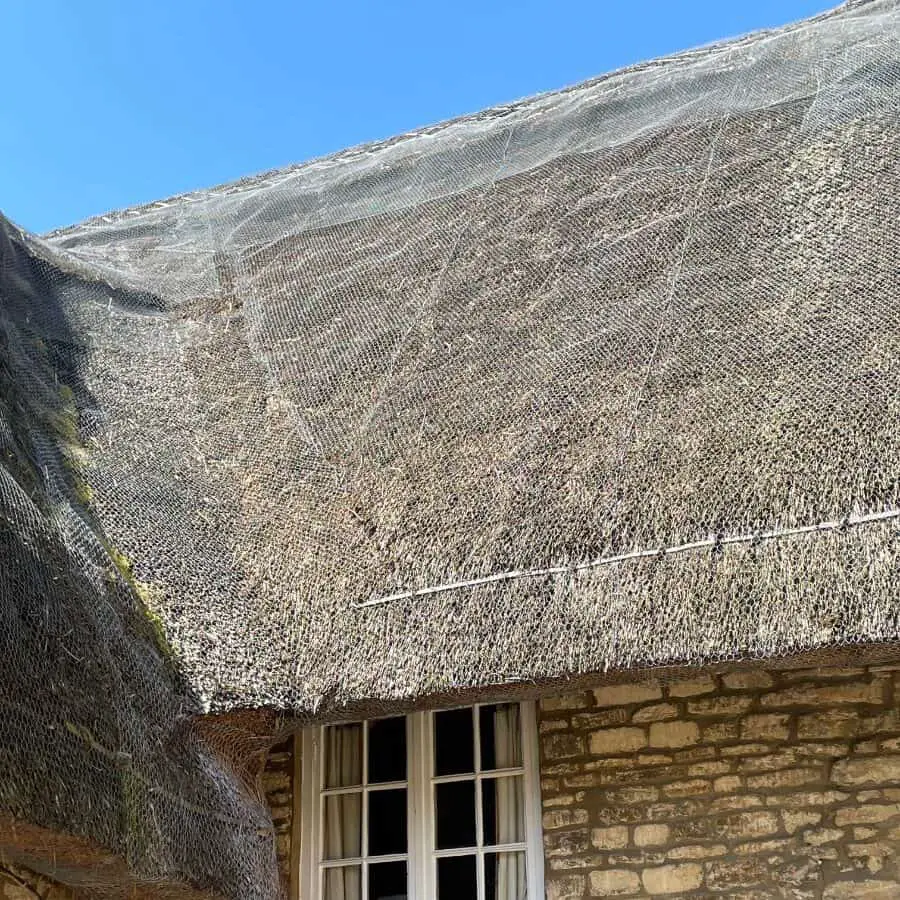
In reality, when the Big Bad Wolf huffed and puffed and blew the house down, he would have had a much harder time with a thatched roof than the three little pigs let on: studies have shown, in fact, that thatch is far more secure and storm-resistant than tiles and other forms of roofing materials.
History of Thatched Cottages
Cottage with thatched roofs have been around for thousands of years, with their prominence in Europe peaking during the Middle Ages.
The art of thatching is an ancient technique, and while it has declined in popularity due to the introduction of alternative roofing materials, thatched cottages continue to captivate people with their timeless appeal and connection to the past. Let’s dive into this rich history in more detail.
How Old Are Thatched Cottages?
Thatched cottages have a rich and ancient history that dates back thousands of years. Although it is difficult to pinpoint an exact age for these structures, they have been in existence since the Neolithic period (approximately 10,200 BC to 4,500 BC).
Thatching, the technique of using dry vegetation like straw, water reed, or heather as a roofing material, has been employed by various cultures across the world, including ancient Egyptians, Romans, and Anglo-Saxons.
When Were Thatched Cottages Built
In Europe, particularly in rural areas of England, Ireland, Scotland, and Wales, cottage with thatched roofs became a popular architectural style during the Middle Ages (5th to 15th century).
With the abundance of materials and the simplicity of the construction technique, thatching became the preferred choice for rural dwellings. These picturesque cottages, often built with cob or timber framing, were affordable, efficient, and provided excellent insulation.
The 18th and 19th centuries saw a decline in the popularity of thatched cottages, as new roofing materials like slate, tiles, and corrugated iron became more prevalent.
These alternatives offered better durability, fire resistance, and were easier to maintain. However, the charm and heritage of thatched cottages have endured, and they remain sought-after properties in the countryside.
What is it about thatched roofs that attract so many people in England?
There is no doubt that looking at a thatched cottage is an aesthetic delight: they look gorgeous, full of old-world charm.
When we picture a cottage with thatched roof, we tend to see the whole dream: the bees humming around the lavender in the haze of a cottage garden, the ring of distant church bells, the lazy yawn of a ginger cat snoozing by the pastel-painted window shutters.
When we see this picture, it is always summer, it is always mid-June when the flowers are at their loveliest and most fragrant, it is never raining, and there is no better place to be than an English country garden in June.
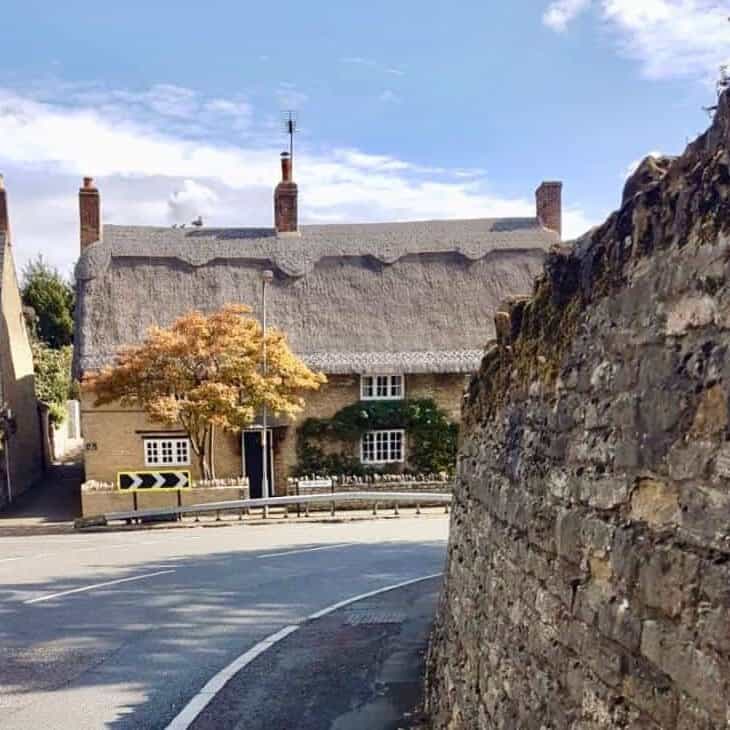
We come out for a cream tea on the lawn, and there is the gentle tap in the distance as willow meets a cricket ball on the nearby village green.
This is forever England. What all our poets and artists have forever loved. This blessed plot, this earth, this realm, this England.
To love a thatched cottage is to be patriotic. When we sing ‘Jerusalem’ we don’t sing about Milton Keynes’s roundabouts, we sing of snug English Villages that Dad’s Army protected and an army of Women’s Institute made jam for.
Thatched cottages give promises of eternal summer and hint at a peaceful country idyll, of fairy stories, of childhood holidays, of a bygone and much simpler era, and of escapism.
For who doesn’t want to get away from it all in this hectic modern world? That’s why people love thatched cottages. Of course, they are also a good investment too.
How Many Thatched Roofs are in England?
Authentic thatched cottages can be seen in many counties in England, but are most widespread in the counties that were once significant grain-producing areas.
There are over 60,000 thatched houses in Britain, with about seventy-five percent of them being listed buildings.
Where Are The Most Thatched Cottages in England?
The counties of Devon, Dorset, and Hampshire in England have a high concentration of thatched cottages, a result of preserving traditional architectural styles.
In Devon, villages like Broadhembury and Croyde showcase numerous thatched properties. The county’s rural charm and its residents’ commitment to preserving historic architecture contribute to the high number of thatched cottages.
Additionally, it is estimated that Devon has over 4,000 thatched buildings, making it one of the leading regions in this regard.
Where to See Thatched Cottages in England
Meanwhile, Hampshire, particularly the New Forest area, is well known for these distinctive homes. This region has a long history of thatching, owing to the availability of local materials like water reed and long straw, enhancing the popularity of this roofing method.
Each of these regions, situated in the South West and along the South Coast of England, promotes traditional craftsmanship, contributing to the preservation of their characteristic thatched cottages.
Which County Has the Most Thatched Houses?
The English county with the most thatched properties is Dorset, located in the southwest of England. Nearly a tenth of the country’s thatched houses can be found in Dorset – that’s around four per square mile.
This region is known for its picturesque countryside, charming villages, and historic architecture, much of which features the distinctive thatched roofs made of straw or reeds.
Thatching remains a popular choice in Dorset due to its aesthetic appeal and insulation properties. Many of the thatched properties in Dorset are historic, dating back to the 16th and 17th centuries, and are protected by preservation orders to maintain their traditional appearance.
Dorset thatched properties can be found in both rural and urban areas, from quaint cottages and farmhouses to grand manor houses and country estates.
The county’s popularity as a tourist destination also means that many of these properties have been converted into charming bed and breakfasts or vacation rentals, allowing visitors to experience the unique charm of thatched architecture for themselves.
Which Country Has The Most Thatched Roofs?
Although this cannot be confirmed, it’s speculated that the country with the most thatched roofs is probably Indonesia, particularly on the island of Bali. Thatched roofs are commonly used in traditional Balinese architecture and can be found on many buildings, including temples, homes, and hotels.
The use of thatched roofs in Indonesia dates back centuries, and it is believed that the tradition was brought over by Austronesian-speaking people who migrated to the region. Thatched roofs are favored in Indonesia because they are well-suited to the tropical climate, providing natural ventilation and insulation from the heat.
However, it is important to note that there may be other countries with a high prevalence of thatched roofs, as the use of this roofing material is common in many regions with a history of traditional building practices.
What are Thatched Cottage Walls Made Of?
Thatched cottage walls are made of a combination of natural materials that provide structural integrity and insulation to the building. Traditionally, these walls consist of a wooden framework filled with a mixture of materials, such as wattle and daub, cob, or stone.

Wattle and Daub: This method uses a lattice of woven wooden branches (wattle) that are coated with a mixture of clay, straw, and animal dung (daub). The daub acts as both an insulator and a moisture barrier, while the wattle provides structural support.
Cob: Cob walls are made from a mixture of clay, sand, and straw, which is then shaped and built up in layers to form a solid structure. The thick cob walls offer excellent insulation and thermal mass, keeping the cottage warm in winter and cool in summer.
Stone: In some regions, stone may be used as the primary material for the cottage walls. Stones are carefully selected, shaped, and fitted together with mortar made from lime, sand, and water. Stone walls are durable, provide good insulation, and can easily support the weight of a thatched roof.
The walls of a stone thatched cottage are usually finished with a layer of lime plaster, which helps to regulate humidity, resist mold growth, and protect the structure from the elements.


